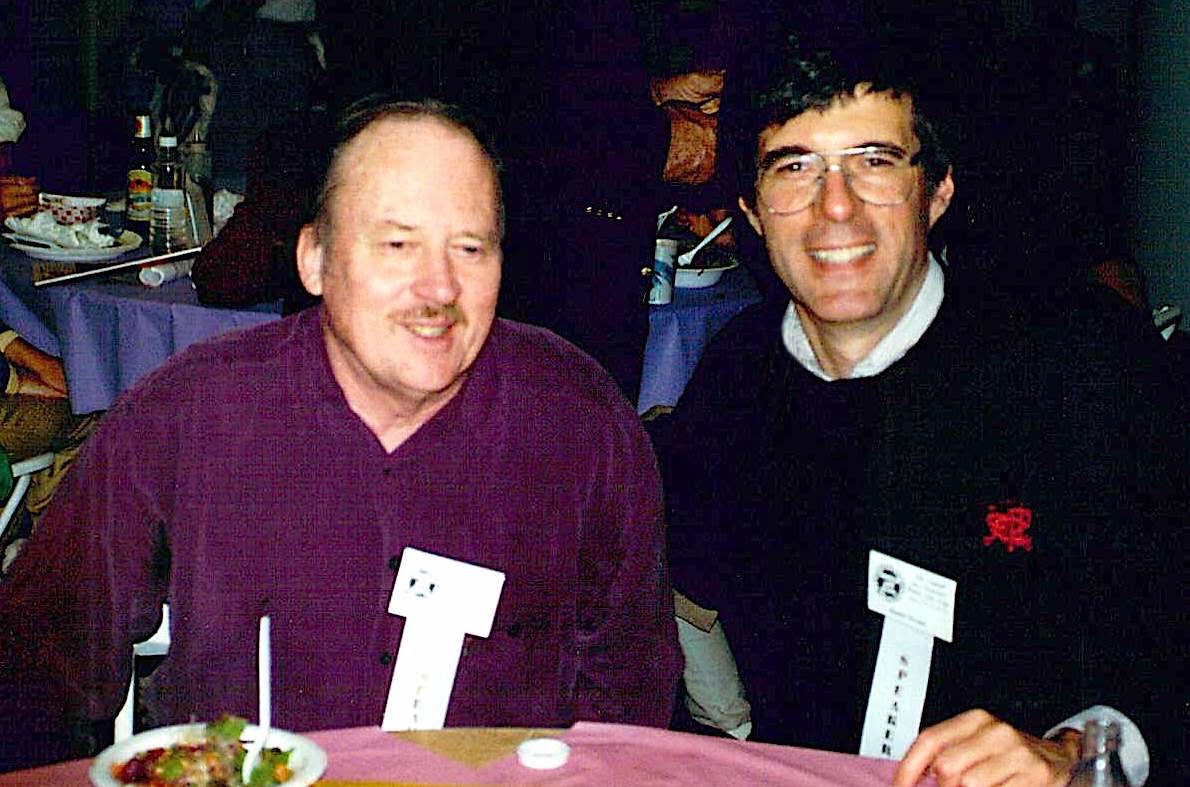
SPSR - Prof. Stanley V. McDaniel

|

|
From Dr. John Brandenburg
"Professor Stanley McDaniel was great man of science, whose positive impact on human knowledge will increase in the coming decades. He exposed the "Mars Coverup" in American science, the importance of which rivals even the UFO Coverup. This is because the scientific evidence which supports a dead biosphere and humanoid civilization on Mars is not only well verified, but also compelling, and at the same time more comprehensible and acceptable to the human mind- surrounded as we are , on Earth, with archeology from extinct civilizations."
From Dr. Mark Carlotto
I’d like to recall some of my experiences with Stan McDaniel. Forgive me for using The Cydonia Controversy (Chapter 7) to help jog a few old memories…
Stan and I corresponded frequently about image processing, shape from shading, and fractals during his investigation of the Face and other unusual features in Cydonia. I first met him in person in November 1997 at a meeting at NASA HQ in Washington DC, organized by Dr. David Webb in which Dr.John Brandenburg, Dr.Horace Crater, Vince DiPietro, Stan McDaniel and I met with Carl Pilcher, the Acting Director of Solar System Studies, and NASA scientist Joseph Boyce. The purpose of the meeting was to request that NASA include Cydonia in their target list for the Mars Global Surveyor (MGS) that was on its way to Mars. This was David Webb's summary of the meeting:
Pilcher firmly and unequivocally stated that it was the official policy of his department and of NASA that the Cydonia region was to be imaged at high resolution during fly-over and that Glenn Cunningham and Mike Malin were aware of, and had signed off on the policy... He went on to say that everyone was interested in having the area imaged: one group because they wanted to show us how wrong we are and have been all along; the other group, because they feel that we have some interesting material, and they would like to see just how interesting it turns out to be.
MGS reached Mars a few months later, On March 26, Stan called to tell me that MGS Project Manager Glenn Cunningham phoned to tell him that the spacecraft would be coming out of aerobraking that night and entering the science phasing orbit. Recall, this was MGS's first imaging opportunity.
I flew out to the West Coast a few days later to support a meeting with Stan, Glenn Cunningham and Arden Albee at JPL to discuss their plans for imaging and data release. (John has a good story about Albee at the AGU conference later that year.) We spent a couple of days planning for the meeting at Stan’s home in Sonoma. I remember having dinner with Dan and others the night before we flew down to LA. After our meeting at JPL, Stan published the following summary on his website:
We have frequently stressed that it is not the position of SPSR scientists to advocate any particular outcome, but to go with the facts as they emerge. If the objects turn out to be clearly natural in origin, we will be among the first to say so. However, it is also important to avoid premature judgment based on initial impressions. It may take many months of study, augmented by data coming from the mapping mission later in 1999, before the true impact of the MGS mission on the question of the anomalies will be understood.
The rest is history, the “Catbox” image, the Fall 1998 AGU conference, etc.
I thought it would be interesting to ask ChatGPT to summarize the McDaniel Investigation. This is what it said:
The McDaniel Investigation highlights a controversy surrounding NASA's dismissal of the "Face on Mars" and other anomalous features in the Cydonia region. Stanley V. McDaniel, a professor of philosophy, explored NASA's claims and found a lack of scientific studies backing their conclusion that these features were natural. Instead, McDaniel encountered dismissive attitudes, conflicting statements, and flawed reasoning in NASA's responses.
Key points include:
Circular Arguments: NASA cited the lack of evidence to avoid funding studies while also refusing to conduct studies to gather evidence.
Contradictions and Misrepresentation: NASA’s explanations, including statements from Michael Malin, often contradicted independent researchers’ findings, such as the persistence of the Face’s appearance under various lighting conditions.
Independent Research Ignored: Peer-reviewed studies by independent researchers showing anomalies (e.g., fractal analysis) were dismissed or misunderstood by NASA.
Speculative Agenda: McDaniel suggested NASA’s approach may reflect a hidden agenda to suppress the investigation, citing the poor quality of NASA’s reasoning and responses.
The investigation underscored the tension between independent researchers seeking deeper exploration of Mars’ anomalies and NASA’s reluctance to allocate resources or acknowledge such studies.
And so it goes.
Thank you Stan for everything. May you rest in peace and find less controversy in the world beyond.
Mark Carlotto
